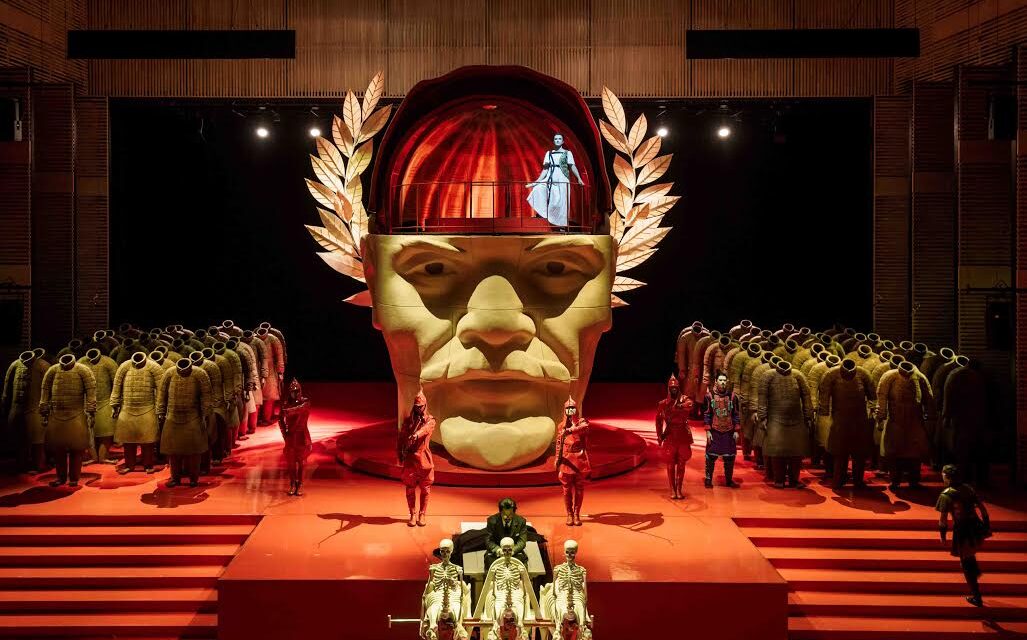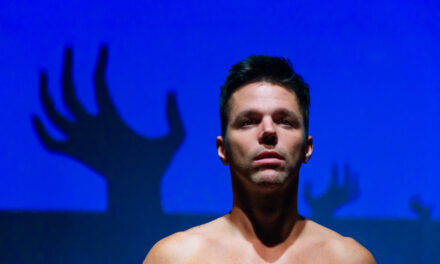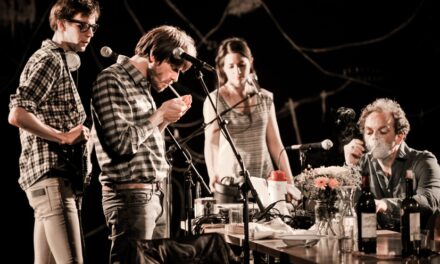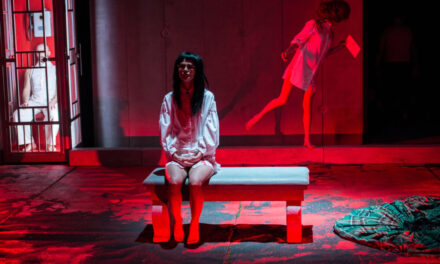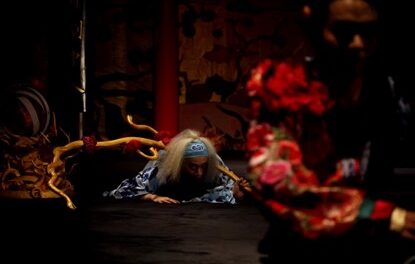 Featuring a libretto based on a 1924 essay by Leon Trotsky about Lenin and fragments of a play, Octavia, attributed to Seneca about the Roman emperor Nero, this is a thrilling new opera staged with verve and ambition by one of Russia’s most acclaimed directors. An opera about the possible and the probable, about the recent and not so recent past, about tyranny and its discontents that allows Lenin, Trotsky and Nero to enter into a poetic, interdisciplinary dialogue on what power means and how it is executed.
Featuring a libretto based on a 1924 essay by Leon Trotsky about Lenin and fragments of a play, Octavia, attributed to Seneca about the Roman emperor Nero, this is a thrilling new opera staged with verve and ambition by one of Russia’s most acclaimed directors. An opera about the possible and the probable, about the recent and not so recent past, about tyranny and its discontents that allows Lenin, Trotsky and Nero to enter into a poetic, interdisciplinary dialogue on what power means and how it is executed.
Octavia. Trepanation, an opera by Dmitri Kourliandski, was created in the year of the centenary of the Russian revolution as a response to the need to reflect upon the nature of power. Commissioned by the Holland Festival (premiered in Amsterdam in June 2017 on the stage of the Muziekgebouw), Octavia. Trepanation explores the theme of tyranny. The director and the composer define the work’s genre as an «opera-operation.» The essence of this operation is the trepanation of revolution: by means of their artistic gesture this production’s creators dismiss the source of bloody tyranny and forever invalidate the notion of war.
The musical fabric of the opera consists of four semantic and functional layers. The first layer presents a group of 12 soloists. Traditionally notated in the score, this layer symbolizes power and order. The second layer, a kind of «climate» created by live electronics, is largely unpredictable. It is generated and controlled in real time by sound artist Oleg Makarov. At the heart of the electronic material are the first bars of the revolutionary song «Varshavianka,» slowed down 100 times. This expansion allows one to open up space between the granules of sound — it is a metaphorical realization of the trepanation of sound. The third layer features a large chorus, an army of Terracotta soldiers. Following the instructions of the text, the choral singers react to the «climate» created by live electronics, and to the material of the soloists, submitting to them and emerging as their shadow, their echo, their live acoustic resonance. Finally, the fourth layer, the symphony orchestra, introduces an element of pure sound abstraction.
The Stanislavsky Electrotheatre is located in the heart of Moscow, on Tverskaya Street 23, and was founded almost a century ago in 1915 as the cinema palace — the Ars electrotheatre. After the revolution it became home to Konstantin Stanislavsky’s opera and drama studio, and not long after that, the Stanislavsky Drama Theatre. The symbolic legacy of these three locations, a cinema, an opera studio and a dramatic theatre, has been fully endorsed by the Stanislavsky Electrotheatre as it launches a new era.
ONE DAY ONLY!
From 3 May 2020 at 6.30pm CET for 24 hours
LEARN MORE ABOUT THE PRODUCTION:
This post was written by the author in their personal capacity.The opinions expressed in this article are the author’s own and do not reflect the view of The Theatre Times, their staff or collaborators.
This post was written by Directed by Boris Yukhananov, composed by Dmitri Kourliandski, Stanislavsky Electrotheatre (2017), Russia.
The views expressed here belong to the author and do not necessarily reflect our views and opinions.

